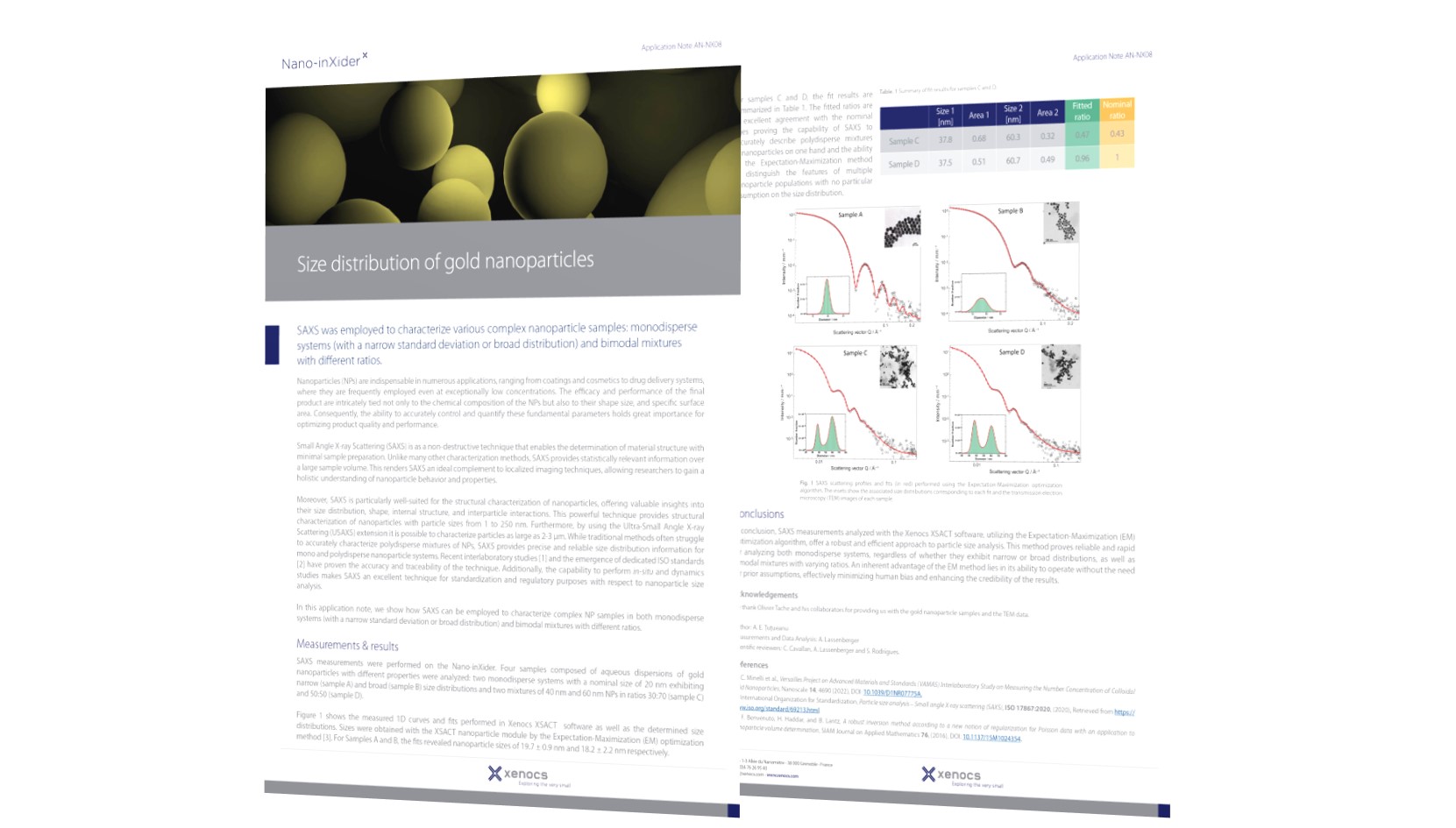SAXS was employed to characterize various complex nanoparticle samples: monodisperse systems (with a narrow standard deviation or broad distribution) and bimodal mixtures with different ratios.
Nanoparticles (NPs) are indispensable in numerous applications, ranging from coatings and cosmetics to drug delivery systems, where they are frequently employed even at exceptionally low concentrations. The efficacy and performance of the final product are intricately tied not only to the chemical composition of the NPs but also to their shape size, and specific surface area. Consequently, the ability to accurately control and quantify these fundamental parameters holds great importance for optimizing product quality and performance.
Small-Angle X-ray Scattering (SAXS) is as a non-destructive technique that enables the determination of material structure with minimal sample preparation. Unlike many other characterization methods, SAXS provides statistically relevant information over a large sample volume. This renders SAXS an ideal complement to localized imaging techniques, allowing researchers to gain a holistic understanding of nanoparticle behavior and properties.
Moreover, SAXS is particularly well-suited for the structural characterization of nanoparticles, offering valuable insights into their size distribution, shape, internal structure, and interparticle interactions. This powerful technique provides structural characterization of nanoparticles with particle sizes from 1 to 250 nm. Furthermore, by using the Ultra-Small Angle X-ray Scattering (USAXS) extension it is possible to characterize particles as large as 2-3 µm. While traditional methods often struggle to accurately characterize polydisperse mixtures of NPs, SAXS provides precise and reliable size distribution information for mono and polydisperse nanoparticle systems. Recent interlaboratory studies [1] and the emergence of dedicated ISO standards [2] have proven the accuracy and traceability of the technique. Additionally, the capability to perform in-situ and dynamics studies makes SAXS an excellent technique for standardization and regulatory purposes with respect to nanoparticle size analysis.
In this application note, we show how SAXS can be employed to characterize complex NP samples in both monodisperse systems (with a narrow standard deviation or broad distribution) and bimodal mixtures with different ratios.



































